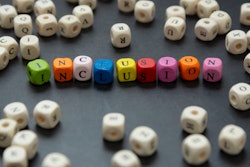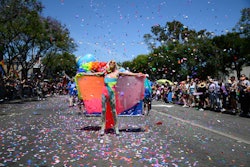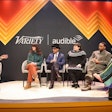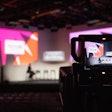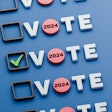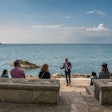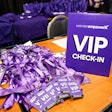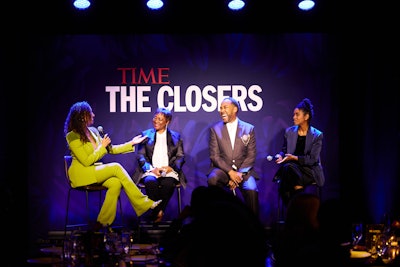
It's hard to turn on the news these days without hearing the acronym DEI. Short for "diversity, equity, and inclusion," DEI refers to policies and practices aimed at ensuring access, opportunity, and advancement for all people, regardless of race, ethnicity, gender, sexual orientation, age, socioeconomic status, and more.
When President Trump resumed office on Jan. 20, he quickly began using executive orders to roll back DEI initiatives, arguing they are discriminatory. Private corporations like Disney, Google, Target, and Meta quickly followed suit, canceling their own programs that focused on hiring diverse candidates, along with DEI training programs, diversity-centric ad campaigns, and more.
In Chardia Christophe-Garcia's view, these rollbacks are a mistake. In her experience, the global head of audience strategy for TIME magazine's events team notes, having a diverse team is simply good business, particularly in the event world. "If innovation thrives on diversity of thought, how can we achieve it if everyone on the team shares the same background?" she asks.  Christophe-Garcia previously held an event and marketing role at Forbes, and was named to BizBash's 40 Under 40 list in 2022.Photo: Daniel Vasquez
Christophe-Garcia previously held an event and marketing role at Forbes, and was named to BizBash's 40 Under 40 list in 2022.Photo: Daniel Vasquez
BizBash recently caught up with Christophe-Garcia to discuss some tangible ways having a diverse team can improve events and the audience experience, her advice to other event professionals, and more.
DEI is a buzzword right now—for some pretty negative reasons. In your experience, how does DEI improve an organization?
"The fact that it’s 2025 and people are still questioning the importance of diversity, equity, and inclusion is insane. There are so many reasons DEI is important, and it’s not just the obvious. As event professionals, it is our responsibility to create experiences that not only resonate with our brand and partners, but also with our audience. Many incorrectly assume that DEI only focuses on people of color, and there’s also a false narrative that DEI allows unqualified individuals to secure jobs in the place of those qualified. These ideologies are simply inaccurate. A big focus of DEI centers around creating access for marginalized communities. This means great/qualified people are being forgotten from chefs, new vendors, venue locations, speakers, attendees, and more!"Looking specifically at the event world, why do you think having a diverse team is so critical?
"Let’s break this down into three high-level parts:Logistics/Production: Some of the world’s most talented chefs never get the opportunity to showcase their skills. A study by the James Beard Foundation highlights how Black and Indigenous chefs often see their culinary contributions erased, their cultures appropriated, and their images exploited to benefit their white counterparts. As event professionals, we have the power to change that. If some of the best cuisine comes from BIPOC communities, why not authentically showcase it? Events are immersive, sensory-driven experiences. By intentionally incorporating diverse culinary voices, we not only elevate the attendee experience but also shape a brand that values authenticity and inclusion.
Programming: Seeing is believing—and that’s especially true when it comes to representation onstage. As event professionals, we’re responsible for curating expert voices that shape the conversation. Yet, when the topic isn’t race-related, too often, people of color are overlooked as thought leaders. Combine that with the systemic lack of diversity in the C-suite, and the cycle of exclusion continues. As event leaders, we must challenge this. If a panel is restricted to C-suite executives—and there are only a handful of diverse leaders across Fortune 500 companies—push back. Make the case for a rising SVP whose perspective would enrich the discussion and give them a well-deserved platform.
Representation also extends beyond race. People with disabilities are rarely showcased, yet their stories often resonate in the most profound ways. You never know how a speaker’s experience will impact someone in the audience. I once spoke on a panel for New York Women in Communications, sharing insights on leadership and my journey as the child of immigrants. Afterward, a young Asian woman approached me in tears, saying my story gave her hope in her own struggles as an immigrant. That moment reinforced why representation matters. When you evoke emotion and connection, your message—and your brand—becomes unforgettable.
Audience: How many times have you attended a conference and felt like the only one? It’s an isolating experience—one that can overshadow the event itself. That’s why, when building an audience, it’s not just about gathering people aligned with the theme; it’s about ensuring diverse voices are part of the conversation."
That's such an important point about your audience. How do you assess audience diversity at your own events?
"You first need a benchmark—but many organizations don’t collect this data, missing a crucial opportunity. It’s one thing to say you want more diverse attendees, but without measurable goals and a diverse database, how do you track progress?At Forbes and TIME, I addressed this by adding a simple question to event registration forms: 'How do you identify?' While respondents could choose 'prefer not to answer,' this was a required field and this data allowed us to analyze trends. Were our events lacking diversity across the board, or did factors like location or industry play a role? With brand-specific insights, we could take meaningful steps toward real change. There’s always more to be done, but this simple first step when measured can start the path to successful change."
Can you share any other examples of how having a diverse team has directly contributed to the success of one of your events?
"As event leaders, we’re constantly challenged to elevate the experience. Whether it’s venue selection, F&B, format, content, or audience engagement, innovation is what sets an event apart. And if innovation thrives on diversity of thought, how can we achieve it if everyone on the team shares the same background?Our perspectives are shaped by our personal experiences and cultures. A great example of this is 'The Closers,' an event TIME hosted [earlier this month] celebrating 25 Black leaders working to close the racial wealth gap. The evening was magical—intentionally designed down to the smallest details, from the colors in the decor to the food on the table.
When curating the menu, it was crucial that we got it right. Our event manager, Vivian de Anda, empowered chef Darnell Lane to stay true to his roots, resulting in a menu that featured jerk tofu tacos, butter pecan chicken and waffles, honey butter cornbread, coconut rice and peas, and more. Our tasting panel included a diverse mix of event staff, and as someone rooted in the Caribbean culture, many of us could authentically speak to the flavors and nuances of each dish. Our feedback helped ensure every bite resonated with the audience, and by the time dinner was served family-style—another intentional touch to spark conversation—it became another highlight of the night.
These details matter. Thoughtful, culturally aware event design leaves a lasting impression, proving that diversity isn’t just a checkbox—it’s a driver of creativity, connection, and unforgettable experiences."
As you mentioned, DEI goes far beyond race. What are some other things you think about under that DEI umbrella?
"Too often, people hear 'DEI' and assume it’s just a program benefiting Black professionals. The reality is DEI encompasses a broad range of considerations that make events more inclusive and accessible for everyone. Event professionals should be thinking about ADA compliance, captioning and sign language, changing tables in restrooms, nursing rooms, prayer spaces, customizable menus for dietary restrictions, inclusive registration forms, and religious and cultural sensitivity—just to name a few.Gender representation is another critical factor. Like BIPOC representation, achieving true balance can be challenging, especially in industries and locations where systemic barriers persist. That’s why leadership must allow event teams the time to thoughtfully design inclusive experiences. Too often, event professionals are expected to achieve meticulous attention to detail under unrealistic timelines. Let’s be real—real change doesn’t happen overnight. Intentional inclusivity takes effort, strategy, and, most importantly, time. If we don’t give our event leaders the space to do this work right, we’re setting them up to fail. And that failure isn’t on them—it’s on the system that refuses to prioritize inclusion."
What advice would you give to other event professionals looking to enhance diversity within their teams and events?
"Start with the obvious—look around. Is your events team diverse? Hard stop. Too often, brands promote diversity and inclusion without truly embodying it. If your team lacks women, people of color, or LGBTQ+ representation, it’s time for change.Next, set a realistic benchmark for year-one adoption. For example, require that at least 30% of vendors for any newly planned event come from minority- or women-owned businesses. Push your programming team to ensure women are always part of panel discussions—no more all-male panels. Similarly, require at least 30% of speakers to be people of color.
Think beyond the obvious. Are there LGBTQ+ activists who can add valuable perspectives to your discussions? Is diversity reflected not just onstage but in the audience? Have you created access for those who’ve historically been left out of the room? And are you having the tough conversations with partners and sponsors—making it clear that DEI isn’t negotiable and won’t take a back seat to brand interests?
No event will get everything right, but setting clear, actionable goals is how real progress happens. That starts with data. Integrating inclusivity-focused questions into your registration forms helps you understand who’s in the room—and who’s missing. Because when you know better, you do better. And that’s how we push for real, lasting change."





